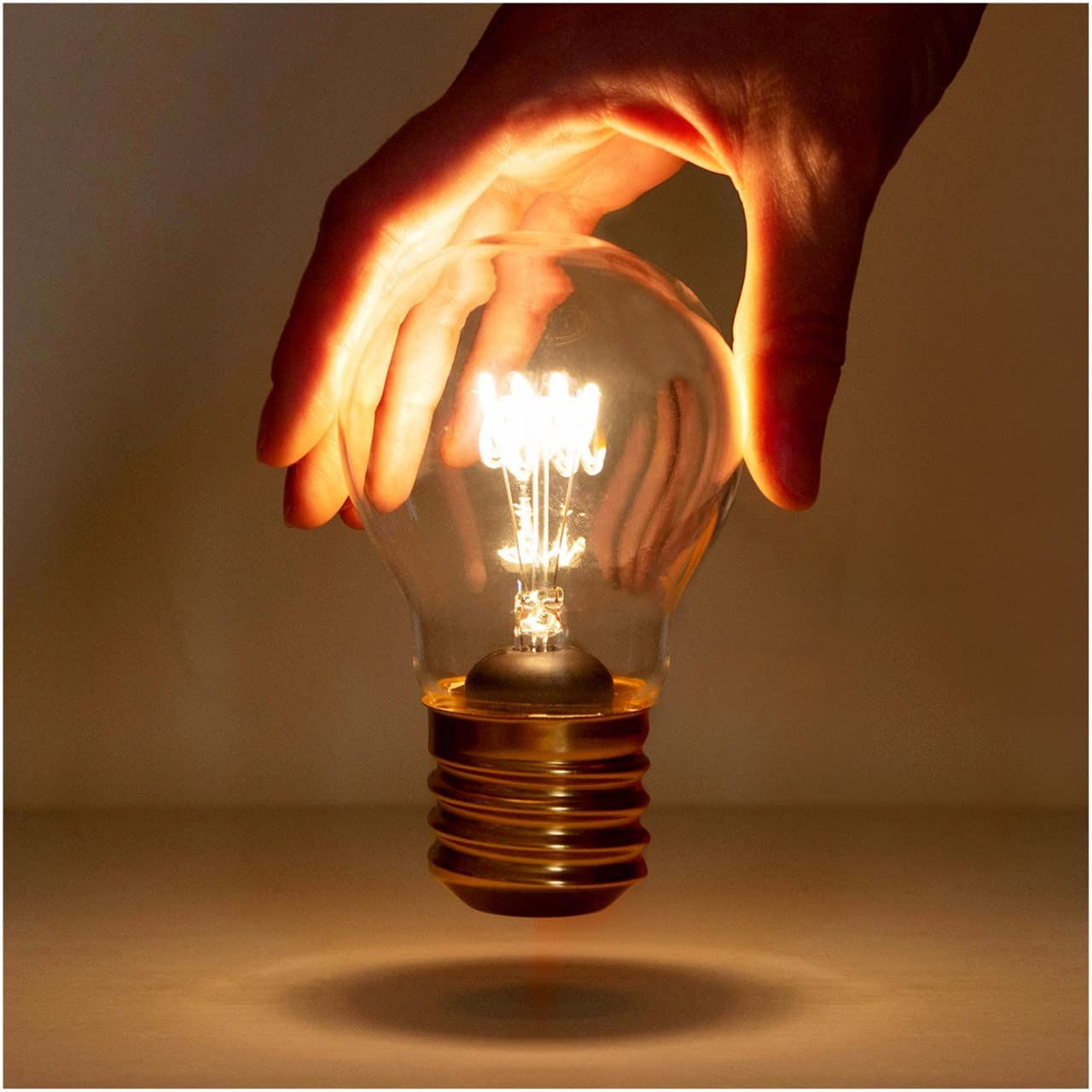
Ready to Land
An airplane circles a large city. From the windows, the passengers see the lights of tall buildings. Far below, cars speed down city streets. It is almost time to land!
Lights illuminate the dimly lit cabin, and passengers begin to gather their things. Seatbelt lights flash on above their heads. The passengers prepare for landing.
Outside the plane, flashing lights warn pilots that the plane is near. They know not to get too close. Landing lights under the plane switch on. Now the pilot can see the darkened runway more easily.
Finally, it is time to land. The pilot eases the plane down the runway. Perfect landing! Soon, it is time to leave the plane. Bright signs tell passengers where to go. Light bulbs kept the passengers safe and comfortable!
Brilliant Ideas
Before light bulbs, people lit their homes with candles and gas lamps. But these could be dim, dangerous, and dirty. In the early 1800s, inventors worked to create electric lights. Within 100 years, light bulbs brought light into the night!
The first electric light came in the early 1800s. Humphry Davy connected two pieces of carbon to a battery. It created a small light between the carbon pieces. This was an early arc lamp. By the end of the century, arc lamps lit the streets of Paris and other major cities!
Many people worked to create the first electric light bulb for homes. In 1835, James Bowman Lindsay introduced the first incandescent light bulb. This type of bulb releases light after being heated up. Frederick de Moleyns patented this new bulb six years later in order to create and sell this invention.
These early light bulbs were inefficient by wasting energy, they were short-lived, and costly to build. Incandescent light bulbs created by Joseph Swan and Thomas Edison in 1879 overcame these issues. Their filaments, thin pieces, were made of carbon that made the bulbs burn longer. Eventually, Edison created a bulb with a life span of 1,200 hours!
Lights in the Night
Inside Edison’s new bulb, wires connected to a thin carbon filament. Electricity traveling through the wires heated the filament to make it glow. Later, inventors experimented with different filament materials. In 1906, General Electric patented the first bulb with a tungsten, heavy, filament. Light bulbs began burning brighter than ever before!
Each fragile bulb was like a vacuum. With no air inside the bulb, the filament burned longer. In 1913, Irving Langmuir added nitrogen to light bulbs. This gas gave bulbs even longer life spans!
In the 1870s, the world was not yet set up to support widespread use of light bulbs. Edison helped develop other inventions needed to install light bulbs in homes.
In 1882, Edison opened the United States’ first permanent power station in New York City. New underground wire networks carried this electricity to light bulbs. Electric meters tracked how much electricity each home used. With light switches, customers could easily turn their lights on and off. By 1925, electricity powered about half of American homes!
By 1940, the longer-lasting fluorescent lamp was on the market. Inside its tube-shaped bulb, electricity passed through mercury gas. This created ultraviolet (UV) light. The bulb’s phosphor coating changed the UV light into visible white light.
Soon, fluorescent bulbs lit hospitals, office buildings, shops, and schools. In 1976, Edward Hammer found a way to coil the fluorescent bulbs. These new compact fluorescent bulbs (CFLs) were much smaller. People could more easily use them in their homes.
Light-emitting diode (LED) lights came in 1962. They created light when electricity passed through materials called semiconductors. This new lighting was highly efficient. It began to appear in many places, such as calculators and traffic signals.
Advances in technology later brought organic light-emitting diode (OLED) lights to the market. These tiny bulbs release bright light. They are perfect for lighting television and computer displays. Today, researchers are creating new ways for OLEDs to light homes.
Creating the Modern World
In time, the light bulb’s invention had vast impacts. People were no longer bound to the sun’s schedule. With electric lights, people could stay awake hours past sunset or rise long before dawn. Life became safer as people stopped burning candles for light at night.
The way people socialized and spent their free time changed. Restaurants were open late at night. Sporting events could take place after dark. Modern cities began to fill with bright lights!
The light bulb helped electrify homes. With electric lights came power stations and electrical wiring. Other electrical appliances, such as refrigerators and irons, came along later. Earlier wiring for electric light bulbs meant these appliances could easily be installed in homes. Soon, electricity became central to everyday life.
The electric light also lengthened workdays. Factories could run every hour of the day. Companies added overnight shifts. Now, they could get more work done!
Even building designs changed with the introduction of light bulbs. Some buildings had fewer windows. There was less of a need for sunlight to illuminate a room.
Electric lights also brought some negative effects. The high use of energy in incandescent bulbs contributes to climate change. Mercury in fluorescent bulbs is harmful to humans and the environment. Animals may become confused when light pollution brightens the sky.
A Bright Future
Many people think the future of light is in LEDs. They are safer for the environment than incandescent and fluorescent lights. They are also much more efficient.
Experts believe LED and OLED lights may also bring a new look to the light bulb. Rather than glass bulbs, thin panels of LEDs or OLEDs could bring light to homes and businesses. Like early incandescent bulbs, these LEDs and OLEDs will light the way to the future!



 About BeeLine
About BeeLine